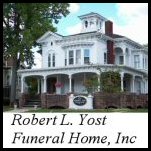Preston Pierce, Ontario County Historian - the Story of John North Willys

Our guest speaker today was Preston Pierce of the Ontario County Historical Society. A Rotarian from Canandaigua, Mr. Pierce is a Paul Harris Fellow who has worked with the Boy Scouts for 35 years. He is a retired social studies teacher from Victor and is currently an adjunct professor at FLCC where he teaches US History. Today, he spoke to us about Canandaigua native and Rotarian John North Willys.
John Willys was born in Canandaigua on October 25, 1873. His father was a tile maker and master bricklayer. Willys attended school on Pleasant Street in Canandaigua, achieving an 8th-grade education. In the 1890’s bicycles captured the attention of Americans. Willys was no exception: he was caught up in the bicycle craze, so much so that he actually started a company. He sold bicycles from several manufacturers, and expanded his business into bicycle repairs and the sale of parts and accessories. In 1893 he was forced out of the bicycle business by the panic of 1893.
Following a time as a travelling salesman, in 1896 he moved to Elmira as an agent for a Boston company that sold braided hoses to industries and fire departments. The following year, he returned to Canandaigua and married his childhood sweetheart, Isabel VanWie, a resident of Cheshire.
In the course of his travels, while visiting a business in Cleveland in 1899 Willys saw his first automobile. The experience would have a great impact on his life. He saw the automobile as the “next big thing” in America. In 1900, he became a dealer for the Pierce automobile company. In 1907, he became taken with an Indianapolis car company called Overland, and began selling their cars. The company would fall on hard times financially, nearing bankruptcy, before Willys bought it out and renamed it the Willys-Overland Company. During the first year, the company sold 465 cars. By 1910, he moved production to Toledo and that year, they sold 15,000 cars. As World War I approached, his company was one of the major companies in the US, employing 75,000.
Willys left the business in 1931, when he was appointed US ambassador to Poland. He held that position for two years. During that time, the Great Depression was setting in. Willys had sold all his stock in the Overland company before taking the ambassadorship. While in Poland, he would hear about the financial problems facing the company, with layoffs and production cuts. Dismayed at what he was hearing, he came back to the US and bought the company back and turned it around by 1935.
John North Willys was a classic example of “local boy makes good” and was something of a celebrity in his hometown Canandaigua. Whenever he would visit, he would get good press and was the honoree of more than one “Willys Day” there. On August 26, 1935 John Willys died of a stroke, after recovering from a heart attack earlier in May. He is interred at the Kensico Cemetery in Valhalla, NY.
Willys’ company went on to design an all terrain vehicle for the US military. Their design went on to become the iconic Jeep, which is currently manufactured by the Chrysler. In 1924, was quoted as saying, “Almost any normal man can stand adversity. He can endure poverty and trouble and disappointment and the rigors of self-denial. But it takes a damned good man to stand prosperity. A damned good, strong, fairly balanced man. That’s the big test.” John Willys certainly passed that test.
Interested in being a sponsor?
Download the website sponsorship guide
Download the website sponsorship guide


